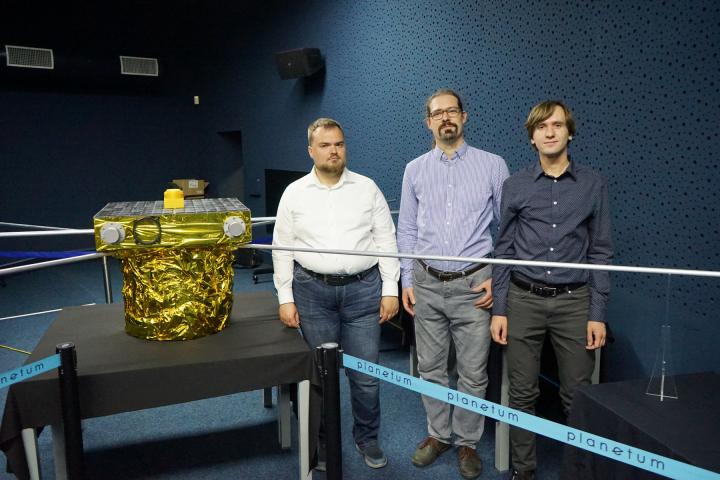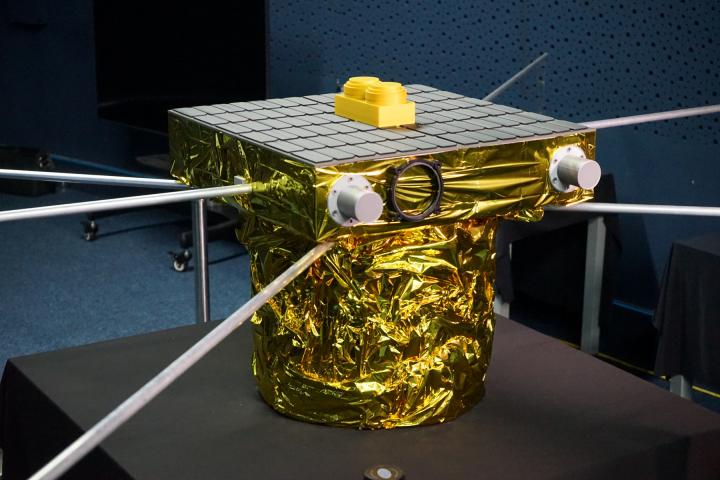
The spacecraft features three cameras provided by Stellar Exploration EU. These will monitor the satellite's technical status and capture images of the Earth and the Moon. The primary mission objective is to measure the concentration of dust in the Kordylewski clouds situated near the L4 and L5 libration points, which are located 60° angularly to the right and left of the Moon. Kordylewski clouds represent quasi-stable orbits capable of trapping interplanetary dust particles, typically measuring a few microns in size. Additionally, the spacecraft will study turbulence in the solar wind and behind the Moon. Thanks to its unique orbit, it will conduct long-term investigations into the flow of solar wind ions and interplanetary shock waves. Furthermore, the mission encompasses gathering data on the flux of galactic cosmic rays and energetic particles from the Sun, including soft X-rays and gamma rays.
The project is a result of a collaboration between private companies, the Academy of Sciences, and universities. The MAGLAB laboratory (Department of Measurements) at FEE CTU will contribute two magnetometers. A student, Kajetán Šobíšek, from the Cybernetics and Robotics program, designed the electronics of the fluxgate magnetometer prototype and part of the firmware as part of his bachelor's thesis. Additionally, David Novotný, a PhD student from the Department of Measurements, is involved in his dissertation on reducing the magnetic signature of the probe using an AMR magnetometer.
The Department of Surface and Plasma Physics at the Faculty of Mathematics and Physics, Charles University, will develop a Faraday Cup Analyzer to characterize the properties of solar wind plasmas and measure their turbulence around the Moon. The Institute of Atmospheric Physics at the Czech Academy of Sciences will contribute LEW electric antennas and a Search Coil Magnetometer for similar measurements in the electromagnetic region. Moreover, the Department of Radiation Dosimetry at the Institute of Nuclear Physics of the Academy of Sciences of the Czech Republic and the Faculty of Nuclear and Physical Engineering of CTU will provide the PARDAL2 detector for measuring charged particle radiation.
The probe will journey through interplanetary space, beyond the influence of Earth's magnetosphere, while also traversing regions of shock waves affected by Earth's magnetosphere disrupting the solar wind flow. Furthermore, it will venture into the Earth's magnetic tail, where interesting physical phenomena affecting space weather around our planet occur. Initially designed to be 12-16 Cubesat-size cubes (10 × 10 × 10 cm), the probe has grown to its current size of 66 × 66 × 61 cm and weighs 140 kg, including fuel. The spacecraft is equipped with solar panels on the front and three battery modules with a total capacity of 300 Wh, and it utilizes three hydrazine thrusters for propulsion.


